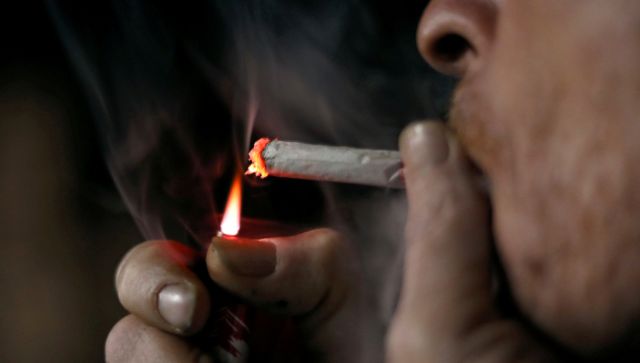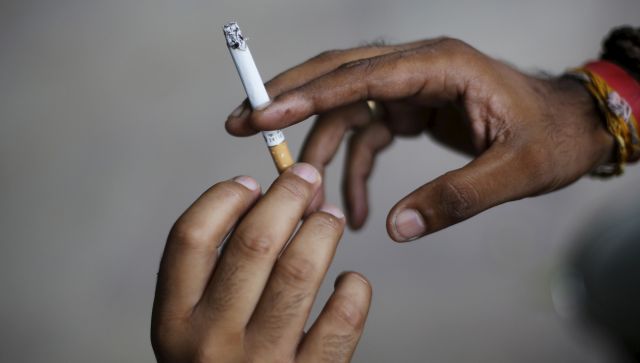Smoking has declined globally with 300 million fewer smokers today, according to a recent report by the World Health Organisation (WHO) on progress in implementing tobacco control measures. As per the report, the prevalence of tobacco smoking fell from 22.8 per cent in 2007 to 17 per cent in 2021 in the last 15 years since the United Nations health agency developed MPOWER measures to reduce tobacco smoking worldwide. These six measures include monitoring tobacco use and prevention policies; protecting people from tobacco smoke; offering help for quitting; warning about the dangers of tobacco; enforcing bans on tobacco advertising; and raising taxes on tobacco products. What are the major findings of the WHO report? What does it say about the dangers of second-hand smoke? How does India fare? Let’s take a closer look. What does the WHO report say? Around 71 per cent of the global population, or 5.6 billion people across the world, are now protected by at least one of the MPOWER measures. This is five times more than in 2008. As many as 151 countries were implementing at least one MPOWER measure by 2022, a rise from just 44 countries in 2008, as per the report.
Four nations – Brazil, Turkey, the Netherlands, and Mauritius – have implemented all six measures to bring down smoking.
“Still 2.3 billion people in 44 countries remain unprotected by any evidence-based demand reduction tobacco control measures, leaving them at risk of the health and economic burden of tobacco use,” Dr Ruediger Krech, WHO’s health promotion director, was quoted as saying by Euronews. “And 53 countries still do not have complete smoking bans in healthcare facilities. That is a no-go and completely unacceptable". [caption id=“attachment_12948812” align=“alignnone” width=“640”] Smoking has declined globally, from 22.8 per cent in 2007 to 17 per cent in 2021. Reuters (Representational Image)[/caption] Moreover, only half of the countries have smoke-free workplaces and restaurants. “WHO urges all countries to put in place all of the MPOWER measures at a best-practice level to fight the tobacco epidemic, which kills 8.7 million people globally, and push back against the tobacco and nicotine industries, which lobby against these public health measures,” Krech said, as per Indian Express. How dangerous is second-hand smoke? Second-hand smoke is the smoke breathed in by people who are in the presence of someone who is smoking. The WHO warns that second-hand tobacco is responsible for the death of 1.3 million non-smokers, including infants and children, every year. Second-hand smoke is linked to an estimated 400,000 deaths from Ischemic heart disease, more than 250,000 fatalities due to chronic obstructive pulmonary disease, over 150,000 casualties due to stroke and lower respiratory disease each, and more than 100,000 deaths due to Type 2 diabetes and thousands of fatalities due to lung and breast cancers. As per the WHO report the risk of severe asthma, respiratory tract infections, ear infections and sudden infant death syndrome is more in children exposed to second-hand smoke. “Young children are particularly vulnerable as they breathe more rapidly than adults, and their lungs and bodies are still developing. Smoking by parents and other household members causes respiratory symptoms and slows lung growth in their children,” the report said. Around 51,000 children and adolescents under 20 years of age die every year globally from exposure to second-hand smoke, the UN health agency said citing the 2019 Global Burden of Disease. A health professional also recently underscored the role of second-hand smoke in enhancing the risk of lung cancer. Dr Anand Sachithanandan, a cardiothoracic surgeon, told Malaysian National News Agency Bernama, that 25 per cent to 30 per cent of his lung cancer patients are non-smoking women. He pointed out that besides genetic proneness (family history of lung cancer), air pollution and second-hand smoke are major risk factors for lung cancer, reported Malaysia’s The Star newspaper. ALSO READ:
US cigarette smoking falls to historic low. Why this is not good news
Where does India stand? The WHO report highlights how Karnataka’s Bengaluru has reduced smoking in public places by nearly 27 per cent. This was possible due to several enforcement drives, an increase in the display of ‘No Smoking’ signs in public venues, and a series of communication campaigns warning about the risks of tobacco use and the effects of second-hand smoke. This March, Bengaluru bagged an international award for its efforts to decrease
smoking
in public places and improve compliance with existing smoke-free laws, the report added. [caption id=“attachment_12948742” align=“alignnone” width=“640”]
Smoking has declined globally, from 22.8 per cent in 2007 to 17 per cent in 2021. Reuters (Representational Image)[/caption] Moreover, only half of the countries have smoke-free workplaces and restaurants. “WHO urges all countries to put in place all of the MPOWER measures at a best-practice level to fight the tobacco epidemic, which kills 8.7 million people globally, and push back against the tobacco and nicotine industries, which lobby against these public health measures,” Krech said, as per Indian Express. How dangerous is second-hand smoke? Second-hand smoke is the smoke breathed in by people who are in the presence of someone who is smoking. The WHO warns that second-hand tobacco is responsible for the death of 1.3 million non-smokers, including infants and children, every year. Second-hand smoke is linked to an estimated 400,000 deaths from Ischemic heart disease, more than 250,000 fatalities due to chronic obstructive pulmonary disease, over 150,000 casualties due to stroke and lower respiratory disease each, and more than 100,000 deaths due to Type 2 diabetes and thousands of fatalities due to lung and breast cancers. As per the WHO report the risk of severe asthma, respiratory tract infections, ear infections and sudden infant death syndrome is more in children exposed to second-hand smoke. “Young children are particularly vulnerable as they breathe more rapidly than adults, and their lungs and bodies are still developing. Smoking by parents and other household members causes respiratory symptoms and slows lung growth in their children,” the report said. Around 51,000 children and adolescents under 20 years of age die every year globally from exposure to second-hand smoke, the UN health agency said citing the 2019 Global Burden of Disease. A health professional also recently underscored the role of second-hand smoke in enhancing the risk of lung cancer. Dr Anand Sachithanandan, a cardiothoracic surgeon, told Malaysian National News Agency Bernama, that 25 per cent to 30 per cent of his lung cancer patients are non-smoking women. He pointed out that besides genetic proneness (family history of lung cancer), air pollution and second-hand smoke are major risk factors for lung cancer, reported Malaysia’s The Star newspaper. ALSO READ:
US cigarette smoking falls to historic low. Why this is not good news
Where does India stand? The WHO report highlights how Karnataka’s Bengaluru has reduced smoking in public places by nearly 27 per cent. This was possible due to several enforcement drives, an increase in the display of ‘No Smoking’ signs in public venues, and a series of communication campaigns warning about the risks of tobacco use and the effects of second-hand smoke. This March, Bengaluru bagged an international award for its efforts to decrease
smoking
in public places and improve compliance with existing smoke-free laws, the report added. [caption id=“attachment_12948742” align=“alignnone” width=“640”] India has achieved success in offering treatments for tobacco dependence. Reuters (Representational Image)[/caption] According to the report, India has achieved the most success in installing health warning labels on tobacco products and in offering treatments for tobacco dependence. India is among the top 10 countries when it comes to the size of health warnings, with 85 per cent of cigarette packs displaying health warning labels on both the front and back side, reported Indian Express. These packets also carry a toll-free number for a quit line. The country also bans smoking in healthcare facilities and educational institutions, the newspaper added. India has “prohibited e-cigarettes and nicotine products, and there is a comprehensive prohibition on tobacco advertising,” noted WHO in its report on the global tobacco epidemic. Flagging the harms of e-cigarettes, WHO director-general, Dr Tedros Adhanom Ghebreyesus, said that the “aggressive promotion” by the tobacco industry of e-cigarettes as a safer alternative has undermined progress in curtailing smoking. “Young people, including those who never previously smoked, are a particular target. In fact, e-cigarettes are harmful to both the people using them and those around them, especially when used indoors,” he warned. With inputs from agencies
India has achieved success in offering treatments for tobacco dependence. Reuters (Representational Image)[/caption] According to the report, India has achieved the most success in installing health warning labels on tobacco products and in offering treatments for tobacco dependence. India is among the top 10 countries when it comes to the size of health warnings, with 85 per cent of cigarette packs displaying health warning labels on both the front and back side, reported Indian Express. These packets also carry a toll-free number for a quit line. The country also bans smoking in healthcare facilities and educational institutions, the newspaper added. India has “prohibited e-cigarettes and nicotine products, and there is a comprehensive prohibition on tobacco advertising,” noted WHO in its report on the global tobacco epidemic. Flagging the harms of e-cigarettes, WHO director-general, Dr Tedros Adhanom Ghebreyesus, said that the “aggressive promotion” by the tobacco industry of e-cigarettes as a safer alternative has undermined progress in curtailing smoking. “Young people, including those who never previously smoked, are a particular target. In fact, e-cigarettes are harmful to both the people using them and those around them, especially when used indoors,” he warned. With inputs from agencies
)